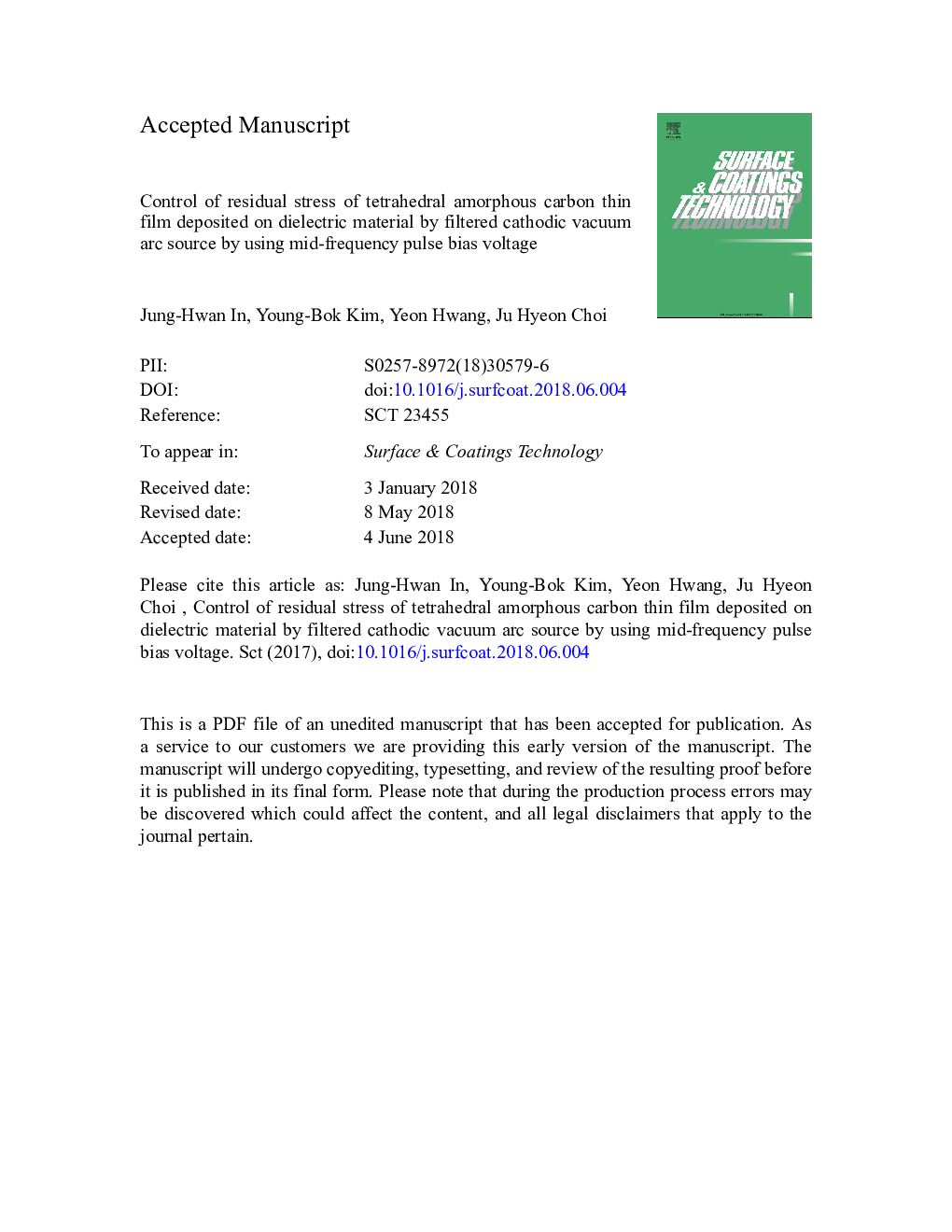| Article ID | Journal | Published Year | Pages | File Type |
|---|---|---|---|---|
| 8023587 | Surface and Coatings Technology | 2018 | 31 Pages |
Abstract
It was shown that the residual stress of the tetrahedral amorphous carbon (ta-C) thin film deposited on insulating material by filtered cathodic vacuum arc (FCVA) source can be controlled with mid-frequency pulse bias voltage. The residual stress of ta-C thin film decreased monotonically with the substrate pulse bias when the base material to be coated was insulating. There was not the apparent peak of residual stress about the substrate pulse bias which appeared for the electrically conducting base material. It was observed that the residual stress increased with the arc current and dielectric thickness at some pulse voltage range (100â¯V-1000â¯V). The sp3 contents calculated by using Raman spectra and the surface hardness values as a function of substrate pulse voltage showed the similar trend with the residual stress values. For ta-C thin film deposited on the polished alumina sample, it was shown that the critical load in the scratch test decreased with the residual stress. The residual stress of ta-C on the insulating base material was explained with the change of the sheath voltage in the equivalent circuit model.
Related Topics
Physical Sciences and Engineering
Materials Science
Nanotechnology
Authors
Jung-Hwan In, Young-Bok Kim, Yeon Hwang, Ju Hyeon Choi,
